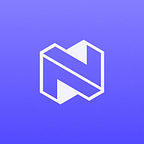What are the benefits of distributed ledger technologies?
By eliminating the need for an intermediary, distributed ledger technologies enable speedy and safe transactions for both enterprises and individuals. DLTs offer a more affordable, accessible, and reliable transaction platform than centralized ledger systems because they do away with middlemen, distribute control of the ledger, and provide a tamper-apparent network.
Get rid of the middleman
Central ledgers are plagued by the costs and inefficiencies of the intermediary since they depend on intermediaries. By completely avoiding middlemen and intermediaries, DLTs do away with these restrictions. There is no need to pay a central agent if there isn’t one. Additionally, you can exchange assets right now without the need for cumbersome paperwork. You are no longer required to base the efficiency of your transaction on the ability of pricy bankers, attorneys, or politicians.
Additionally, you are no longer required to entrust the ledger and your possessions to bankers, attorneys, or politicians. Because DLTs are trustless systems, no participant is required to put their trust in another participant to ensure the integrity of the ledger.
Accessibility
DLTs offer a service that is far more open to the public than centralized systems, which monopolize control and restrict access to their ledger. DLTs enable people and companies to conduct transactions freely, without relying on or having faith in a third party. This is furthered by public DLTs, which place no limitations on transactions or participation; no one may be barred from the platform, and no transaction will be given preference over another.
Tamper-apparent
Traditional ledgers may offer quick and easy record-keeping, but they are susceptible to hacking and corruption. A corrupt central agent can tamper with the records without the knowledge or approval of the affected members because only one central entity has jurisdiction over the ledger. Additionally, since there is only one copy of the ledger, hackers only need to focus their attacks on one specific, identifiable target. When we employ a centralized ledger, we must simply believe that the central third party is neither corrupt nor compromised because we cannot see whether tampering has taken place.
However, distributed ledgers are intrinsically impervious to manipulation. While a hostile agent may undermine a central system by changing a single ledger, to affect a distributed system, they would need to change at least several ledgers.
DLTs are tamper-apparent even though they are not tamper-proof. In other words, if manipulation does take place, the network’s transparency guarantees that everyone will be aware of the change. A DLT participant can feel easy knowing that they will be informed if tampering does happen even though they cannot be confident that the ledger will stay untouched.
Immutability and controlled mutability
By achieving immutability, certain distributed ledgers go beyond tamper-apparent security to prevent any participant from altering established records for any reason. These immutable DLTs limit their users from seeing the ledger and doing new transactions. There would be no avenue inside the system’s architecture for such modification to happen even if all network users wanted to alter the ledger. An immutable distributed ledger’s users may be sure that their ledger is both tamper-apparent and tamper-proof. If a distributed ledger technology does not allow any person or group of participants to change or remove existing entries, it is said to be immutable.
Immutability does, of course, have drawbacks. In some circumstances, it could be advantageous to alter old records. For instance, immutability would make it impossible for anyone to remedy a defect in the DLT’s code that causes a transaction to be incorrectly recorded in the ledger. The erroneous transaction would remain in the official ledger for all time. A change in record-keeping procedures could also be required by new government rules as laws are updated to reflect technological advancements. Immutable systems would be unable to adjust to these shifting legal requirements and run the danger of failing to meet regulatory requirements.
Some DLTs choose controlled mutability because they are aware of the drawbacks of both mutability and immutability. Records can be modified in DLTs with controlled mutability, but there are tight limitations on how that can be done.
The greatest of both worlds is controlled mutability: no hostile player or group of participants may change the records secretly (tamper-apparent), yet the DLT can adjust to defects and shifting laws.
About us:
NFT Labs is a web3 company exploring big ideas in community, utility and engagement to push the crypto, NFT and metaverse space forward. To learn how your organization can participate in the web3 revolution, write to us at hello@itsmyne.club.
We’re backed by leading blockchain institutions including Longhash Ventures, Antler, Oracles Investment Group, and Shima Capital among others. NFT Labs is also the issuer of the MYNE token ($MYNE), a BEP-20 utility token for Itsmyne and partner applications. MYNE serves as the gateway between traditional social media and blockchain-based social economies.
